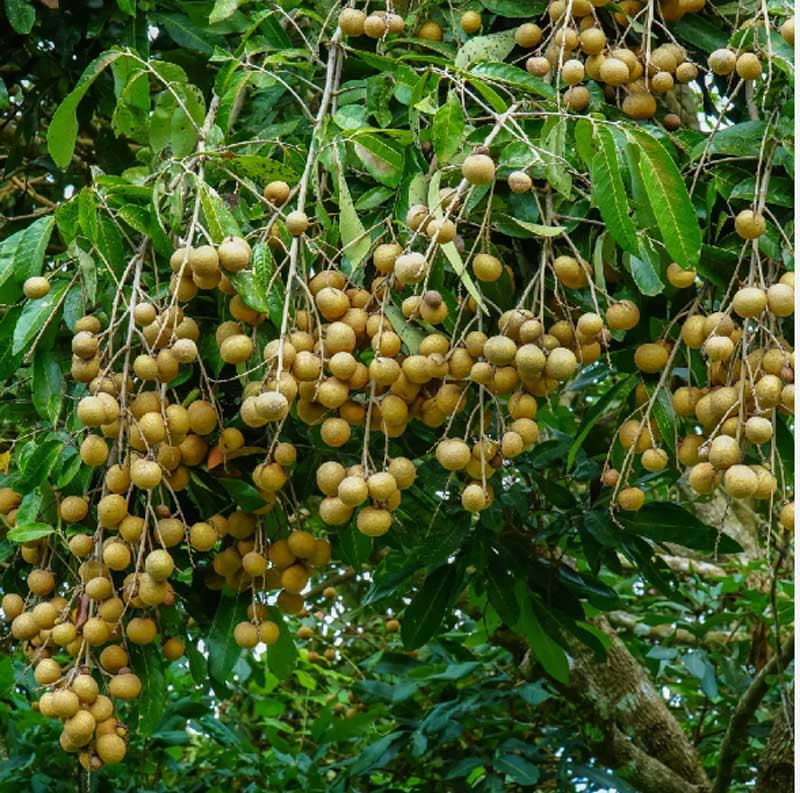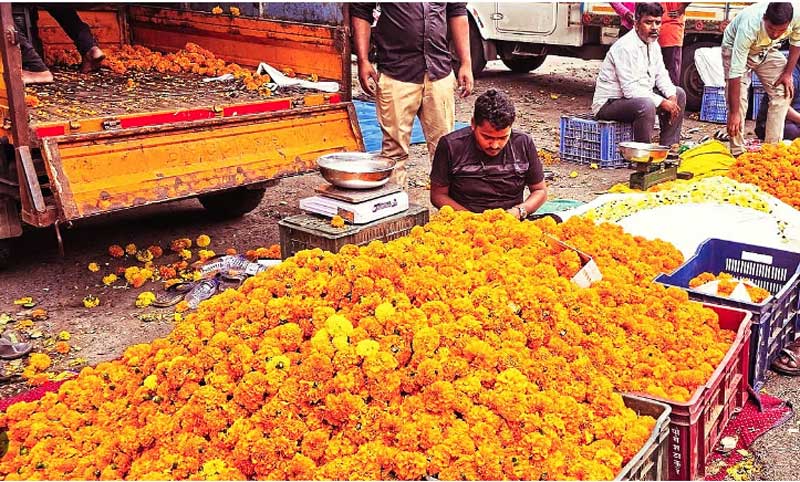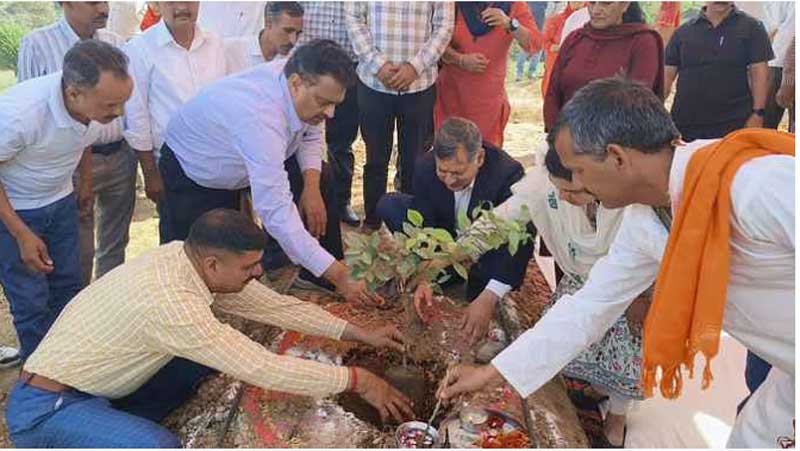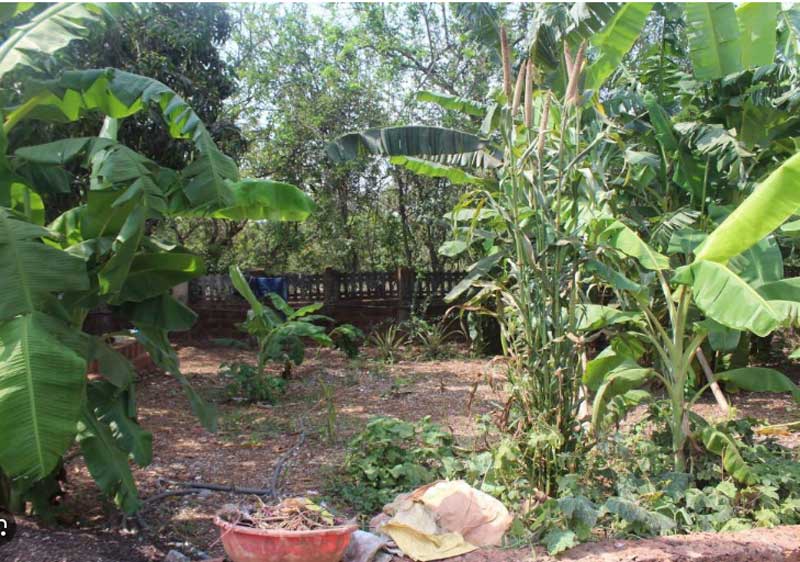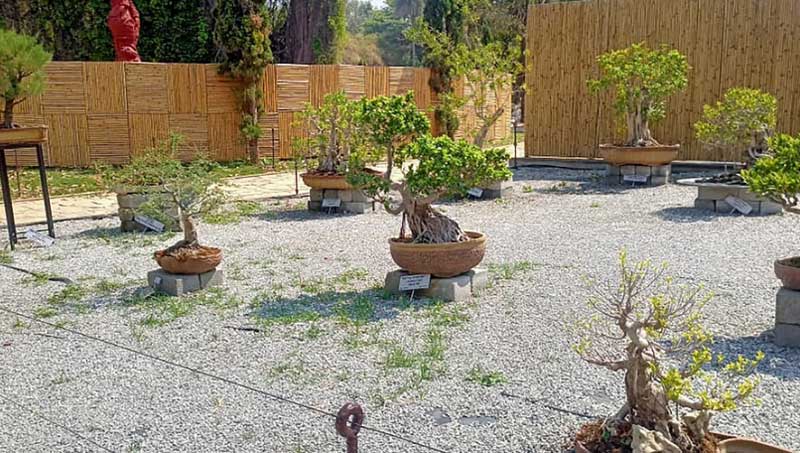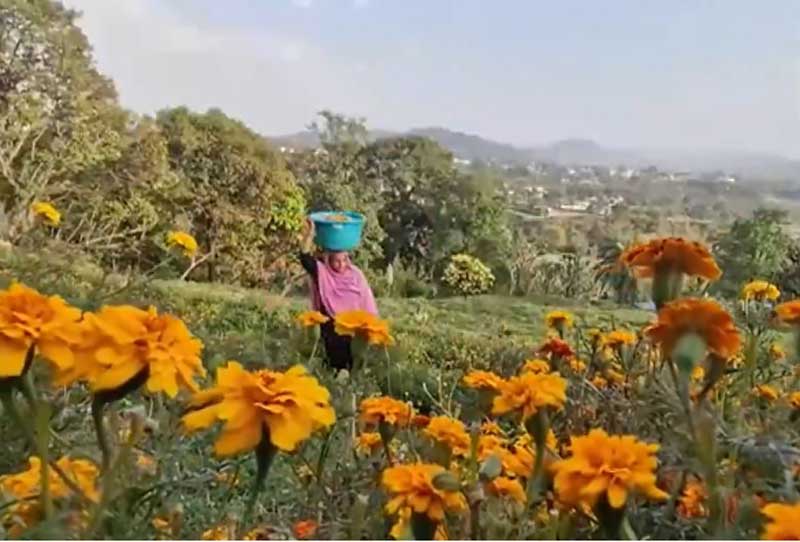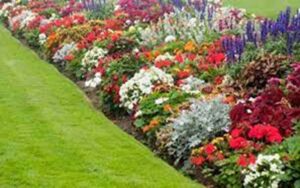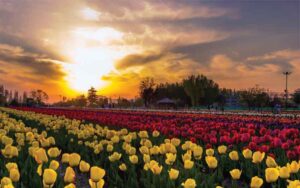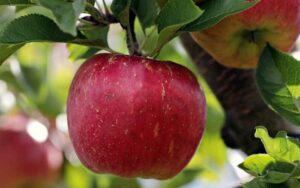AMRIT UDYAN- A Garden of Colors
Rastrapathi Bhavan, the official residence of the President of India, located in New Delhi and the Mughal gardens of these Rastrapathi Bhavan are known for their splendid beauty and are a major tourist attraction. On the eve of celebrations of 75 years of independence as ‘Azadi ka Amrit Mahotsav’, the President of India is pleased to give a common name to the Rastrapathi Bhavan gardens as ‘Amrit Udyan’. Udyanotsav or Garden Festival – Celebrations of magnificent gardens of Rastrapathi bhavan, which occurred during the months of February and March every year, opened to public to witness the confluence of beauty with the pride. During this festival time, visitors can experience the spectacular beauty of the gardens, which are filled with a variety of flowers, trees and other plants.
Amrit Udyan is a garden situated at the back of the Rastrapathi Bhavan. Formerly known as the ‘Mughal Gardens’, it incorporates both Mughal and English landscaping styles and feature a great variety of flowers and trees. This garden is designed by a British architect Edwin Landseer Lutyens in the year 1929. The gardens are spread over an area of 15 acres of overall area of 330 acres. These gardens are open to the public once in a year and it is a visual treat of flora and fauna to the visitors.
The Amrit Udyan consists of different sections like
• Herbal Garden
• Bonsai Garden
• Musical Garden
• Main Garden
• Central Lawn
• Long Garden
• Sunken Garden
Herbal Garden:
The Herbal Garden, as the name suggests, is home to a variety of herbs and medicinal plants. This garden was inaugurated by Dr. A. P. J. Abdul kalam in the year 2003 and it have a collection of about 35 various medicinal and aromatic plants, like Sarpagandha, Ashwagandha, Barleria, Tulsi, Chamomile, Brahmi, Kalmegh, Evening primrose, Geraniums, Fenugreek, Coleus, Asparagus, Sweet flag, Periwinkle, Milk thistle, Lemongrass, Garlic, Palmarosa, Guggal, Marigolds and Rosa damascena etc.
Bonsai Garden:
Next to the continuation of herbal garden, we can experience the Bonsai Garden which is an enclosure structure. These bonsai form the good display materials, where the beauty of a bonsai can be judged on their style, shape, size and overall appearance. This bonsai section included about more than 50 different species, with an age of 5 to 55 years. Many trees of Ficus species i.e., Ficus virens (Pilkhan), Ficus religiosa (Pipal), Ficus braid (Desi Ficus), Ficus elastica (Pandupata), Ficus bengalensis (Banyan tree), Chirni Ficus (Green Island), Callistemon viminalis (Bottle brush), Manilkara hexandra (Khirni), Bougainvillea spectabilis (Bougainvillea) and Hibiscus rosa-siniensis (Hibiscus), Araucaria columnaris etc., are trained into bonsai.
Musical Garden:
After bonsai gardens, we can experience the frisson of Musical gardens. The specialty of this garden is that it consists of group of fountains that emit the jets of water synchronizing to the musical effect. Three different fountains, together mesmerize the viewers.
Main garden:
As this garden is constructed in Mughal style, includes the features of the Mughal style like Naharas (Water channels), giant walls, flowering and fruit trees etc. This garden is divided into a grid of squares by two channels that run north to south and two channels that run east to west. At the intersections of these channels, there are six lotus-shaped fountains and the lively fountains that soar up to a height of 12 feet produce a tranquil murmur that mesmerizes visitors.

There are two large lawns: the center lawn, which is a square with 45 meters on each side and the east lawn, which is next to the building and is an oblong with a size that is around one-third that of the central lawn. Doob grass, which was originally transported from Calcutta covers the area. The Moulsri, Putranjiva Roxburgi, Cypress, Thuja Orientalis, and China Orange trees, rose shrubs, and a variety of climbers give this garden its evergreen appearance.
Moulsri, also known as Bakul, is an Indian tree. They are groomed to look like mushrooms and are planted in square areas of turf along the channels and on the edge of the two main lawns. They give the garden charm and depth. They bloom in May and June, and their soft pleasant aroma pervades the surrounds. This tree has been mentioned in the ‘Sangam’ literature, in the plays of the great poet Kalidasa, and more recently in Ain-in-Akbari by Abul Fazl. A play by Kalidasa contains important insights about this tree. A flowering tree is linked to a pregnant woman who nourishes desires for uncommon things.
Moulsri trees in the garden
Cypresses flank the sidewalk and add a touch of formality with their consistent, full, erect shape. They create a depth perspective when planted axially. China Oranges alternate with Cypresses and provide a refreshing change of pace. Whereas Cypress represents death and the hereafter, China Oranges change appearance from season to season, symbolising rejuvenation and the celebration of life.
 Plantings of Putranjiva Roxburgi surround the two gazebos at the western extremities of the two terrace gardens. These gazebos are distinctive in and of themselves, and when combined with the shade of Putrnajiva Roxburgi, they create an enticing grove of serenity and relaxation.
Plantings of Putranjiva Roxburgi surround the two gazebos at the western extremities of the two terrace gardens. These gazebos are distinctive in and of themselves, and when combined with the shade of Putrnajiva Roxburgi, they create an enticing grove of serenity and relaxation.
Thuja Orientalis, a coniferous tree ornately bound in squares of well-chiseled Golden Duranta hedges, is a magnificent sight. This combination is positioned around the perimeter of the main garden and marks the pattern’s many junctions and terminations.

Floral carpet arranged in the central lawn of Amrit Udyan
Long Garden: This garden especially dedicated to the fragrant roses, climbers and Chinese oranges. An attractive pergola (series of arches) covered with different type of climbers. Many hanging baskets were also arranged on the either side of this pergola.

Pergola with Purple wreath climber Hanging baskets with Chlorophytum
View of the long Garden (Dedicated to the roses)
Roses bloom all year round. The best bloom occurs after they are pruned in October each year. Together with the evergreens mentioned thus far, roses contribute to textural permanence throughout the year. The garden boasts over 250 famous rose varieties, making it one of the top Rose Gardens in the world. It has roses like Bonne Nuit, Oklahoma which are nears to being black. In blues it has Paradise, Blue Moon, Lady X. This garden also has the rare green rose. The Roses have some very interesting names. Few Indians that have found place here are Mother Teresa, Arjun, Bhim, Raja Ram Mohun Roy, Jawahar, Dr. B. P. Pal. The international celebrities here are John F. Kennedy, Queen Elizabeth, Mr. Lincoln, Montezuma. Others worth mentioning are Christian Diar, Happiness, Century Two, First Prize, Jantar Mantar, Peter Frankenfeld, American Heritage, Bejazzo, Iceberg, Granada, World Rose, Command Performance, Imperator. The list is endless and the spectacle delightful. Vertical gardens can also seen in this long garden with contrasting ornamentals in it.
Arrangement of a Vertical Garden
Circular or Sunken Garden: This garden is in circular form and has the descending steps towards the center. The central portion consists of a large fountain as a focal point. The various circular levels planted with colorful and vibrant annuals.
View of Circular or Sunken Garden
Around the terrace walls, the following evergreen fragrant shrubs and creepers are planted:
• Raat ki Rani
• Mogra
• Motiya
• Juhi
• Bignenia vanista (Golden Showers)
• Gardenia
• Rhyncospermum
• Petrea
• Harshringar
• Bougainvillea
• Adenocalymma (Garlic Creeper)
• Hedera Helix
• Climbing Roses
• Tecoma Grandiflora
• The Rangoon Creeper
Various herbaceous annuals and biennuals are grown in beds and informal borders. The beds are sited at the edge of lawns or along the pavements. Also, the flowers are massed irregularly with respect to their height and grouped in color combinations to produce harmonious, natural and pleasing effect.
Seasonal plants are planted twice a year in preparation for the President’s “At Homes” on the occasions of Republic Day (January 26th) and Independence Day (August 15th) each year, which are held on the Central lawn.
For winters the garden is replete with a number of annuals that have to compete with each other to find a place. Dwarf annuals like Antirrhinum, Alyssum, Brachycome, Calendula, Dimorphotheca, Eschscholzia (Californian Poppy), Larkspur, Gerbera, Gazania, Godetia, Linaria, Metucharia, Mesembryanthemum, Portulaca, Pansy, Verbena, Viola, Stocks grow well in flower beds. Other annuals that are grown include Aster, Dahlia, Chrysanthemums, Carnation, Clarkia, Statice, Lupin, Marigold, Nemesia, Nicotinia, Bells of Ireland, Poppy, Salvia, Stock, Cosmos, Linum, Sweet Pea, Sweet Sultan, Cineraria, Sweet William etc. They are used in pure beds and in combinations of varying heights create a pyramid of colours. Beauty stealers of the Amrit Udyan are the Tulips, Stocks and Dahlias.
Tulips in the flower beds
Dahlias Stocks
Edging and bordering of flower beds is done by Alyssum, Daisy, Pansy, Petunia, Phlox, Mimulus etc. Under the standard roses are grown Daisies, Mesembryanthemum, Pansies, Viola etc.
Naturalizing effect is created by the bulbous flowering plants like Narcissus, Freesia, Zephyranthrus, Gladiolus, Tuberose, Oriental Lily, Asiatic Lily, Tulips, Anemone, Ranunculus, Iris, Daffodils etc.
Other ornamentals seen in the Garden
Designing and maintaining of these gardens involved a great creative and wonderful efforts. Amrit Udyan, really a visual treat to the visitors. Incorporating a various type, colors, shapes of the ornamentals along with different arrangements, which mould perfectly into the Mughal style make a worthful appreciations from the viewers. In addition to the aesthetic appeal, Amrit Udyan bags a contribution of maintenance of biodiversity of the area along with serve of peaceful and tranquil spaces for relaxation, enjoyment which provides a connection with nature.

